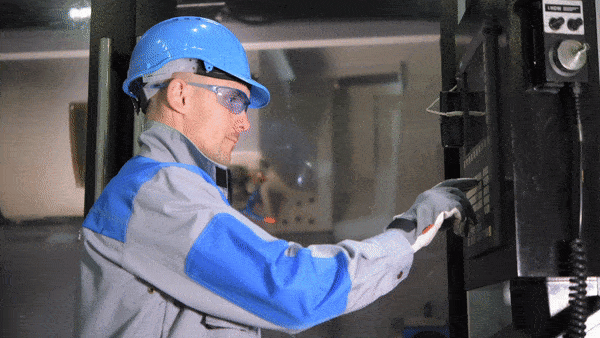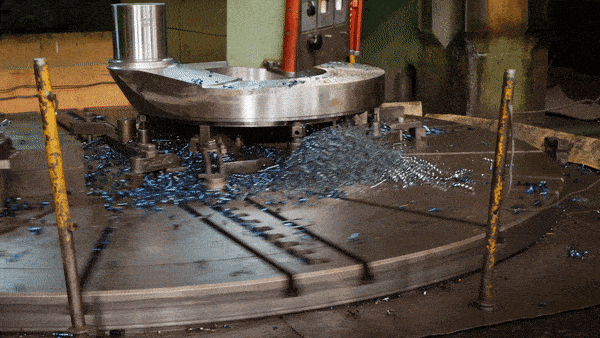CNC Machining is a common process to produce complex parts. Whether you’re a manufacturing, mechanical or design engineer, you’ll often rely on CNC Machining to develop and manufacture a part. This guide is meant to help you understand the process and how you can benefit from the high-quality parts and mass production that come from CNC Machining.
What is CNC Machining?
CNC (Computer Numerical Control) Machining is a manufacturing process that uses subtractive machining technology and Computer-Aided Design (CAD). The process begins with an engineer designing a model using CAD software; then, a machinist turns that CAD file design into a CNC program that runs in the CNC Machine. The machine, automated and with little supervision, removes material from the workpiece using various cutting tools and creates quality, precise parts. The process is cost and time-efficient, effective, and accurate for one-off parts or mass production runs.

Benefits of CNC Machining
-
- Cost-Efficient
- Accuracy
- Convenience
- Consistent Quality
- Production Speed
- Simplifies Processes
The Cost of CNC Machining
You probably already guessed – the cost of CNC machining varies according to projects, complexity, quantity, and material. Most materials can be CNC machined, such as plastics, ABS, nylon, polycarbonate, metals such as aluminum, steel, brass, steel alloys, wood, foam, and composites. Less dense material is commonly faster to machine and operates at a higher feed rate. A higher feed rate or reduced machine time is a key factor in reducing cost. Other factors that can affect the cost include additional finishes and tolerances. Stricter tolerances and harder material always relate to higher-cost parts and can lead you to an expensive project.
What Engineers Should Consider
The part size and number of reorientations required for machining should be considered when engineers design a part. These two factors have a major impact on the setup time, machining work, lead time, and cost. If you happen to be in a hurry and need CNC parts fast, you can reduce the design’s complexity, so the machining requires fewer operations. If you have overly tight tolerances, consider how the part will be used and how it affects other parts. You may need more realistic tolerances that won’t significantly increase lead times or costs.
Tolerance refers to the range for a dimension. A designer or engineer will determine the tolerance based on the part’s function, fit, and form. Most parts will have a maximum and minimum limit and include different tolerances, such as thread tolerances, positional, flatness, and parallelism.
Typical Tolerances:
- +/-.005 inches or better or +/-.125 mm overall without drawings.
- +/-.002 inches or better or +/-.125 mm overall with drawings, tighter for press fits and bores.
- Grinding can achieve +/-.0005 or better.
Types of CNC Machine
Because CNC machines are designed for manufacturing a variety of items, it’s important to know the different types of machines.
Lathes – uses various tools to precisely cut workpieces as they rotate. Lathes are smaller, compact, very precise, and often have fewer axes than milling machines. They’re usually at a lower cost than mills and produce at an extremely high rate.
Mill turning – uses computer controls to cut various materials at high speeds and remove material from the workpiece to form the part. Mills are large and have various functions, including face milling, shoulder, milling, turning, drilling, and tapping.
3 Axis – operates through 3 axes, allowing the cutting tool to move up-down, left-right, and back-forth. The best use is for simple geometries and tight tolerances.
4 Axis – operates through 4 axes with all the benefits of 3 axis cutting, but with a rotating table to make cuts on every side of the workpiece.
5 Axis – operates through 5 axes, allowing for more complex designs, more rotation flexibilities, and advanced capabilities. The best use is for intricate and organic designs, complex features, and smooth contours.
Rapid Axis prototypes and manufactures parts through CNC Machining. We have high-speed lathes, an assortment of mills, and a small army of 4 and 5 Axis CNC machines ready to make your parts. Lead times can be as short as 3-5 business days for some projects. We support all commercially available materials as well as any post-process finishing requirements. All parts are given a Rapid Axis 1st Level Inspection for free and full FAI and more can be completed at request. We work directly from STEP file and check against drawings.
Contact us today, and we can walk you through the CNC Machining process and what type will work best for your part.

